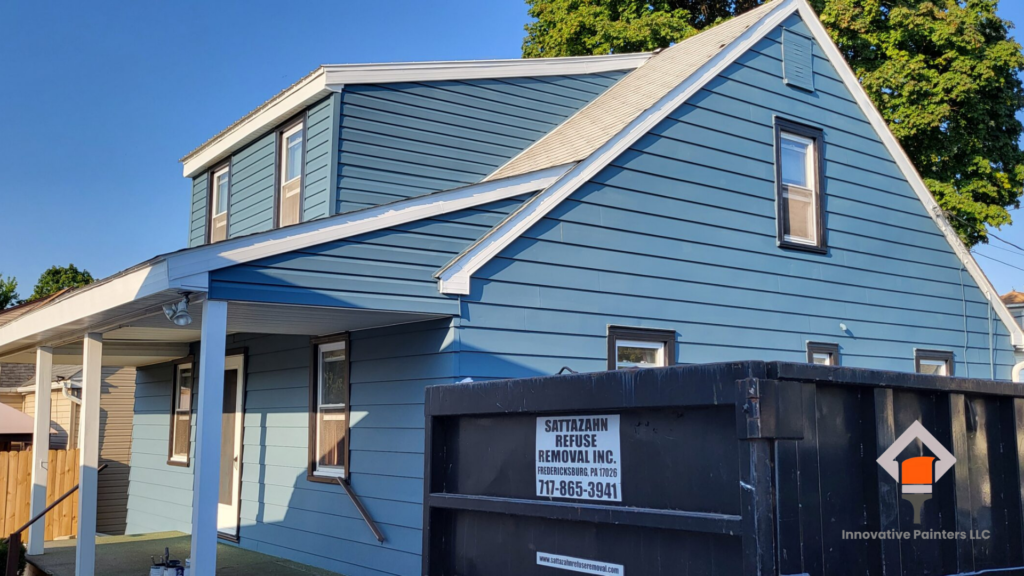Choosing the Right Paint for Historic Homes in Berks County: A Complete Guide

Berks County is home to a rich history, with many beautifully preserved historic homes that tell stories of the past. However, maintaining the aesthetic and structural integrity of these homes requires careful attention, especially when it comes to painting. The right choice of paint can enhance a home’s beauty while protecting it from weathering and deterioration. In this guide, we will walk you through everything you need to know about selecting the perfect paint for your historic home in Berks County.
Understanding Historic Home Paint Needs
Painting a historic home is not just about refreshing its look; it’s about preserving its history and character. Unlike modern homes, historic homes were often built with materials and techniques that require special care.
Why Standard Paints Won’t Work
Most modern paints contain acrylics and other chemicals that can trap moisture, leading to peeling, cracking, and even structural damage in older homes. Historic homes were often built with materials like wood and brick that need to breathe. Choosing the right paint ensures that moisture can escape while still offering protection from the elements.
Historical Color Accuracy
Selecting historically accurate colors is essential for maintaining the authenticity of your home. Many older homes featured muted earth tones, rich ochres, deep blues, and soft whites that reflected the era of their construction. Researching historical color palettes or consulting with a preservation expert can help you achieve an authentic look.
Best Types of Paint for Historic Homes
Choosing the right type of paint is crucial for both longevity and aesthetics. Here are the best options:
1. Lime-Based Paints
Lime-based paints have been used for centuries and are an excellent choice for historic homes with masonry surfaces. They are highly breathable, allowing moisture to escape while providing a natural, matte finish that enhances historic charm.
Pros:
- Highly breathable, preventing trapped moisture
- Eco-friendly and natural
- Develops a beautiful aged patina over time
Cons:
- Requires multiple coats for durability
- Needs periodic reapplication
2. Linseed Oil Paints
Linseed oil paints are ideal for wooden surfaces in historic homes. This traditional paint is made from natural oils and provides a flexible, long-lasting finish that expands and contracts with wood.
Pros:
- Penetrates wood for deep protection
- Resistant to cracking and peeling
- Safe for the environment
Cons:
- Long drying time
- Can darken over time
3. Mineral-Based Silicate Paints
Silicate paints bond chemically with masonry, making them a superior option for brick and stone homes. They are highly durable and resistant to fading.
Pros:
- Strong adhesion to masonry surfaces
- Long-lasting and highly durable
- Naturally resistant to mold and mildew
Cons:
- Expensive compared to other paints
- Can only be used on specific surfaces
4. Milk Paint
For an authentic vintage look, milk paint is a great option. This eco-friendly paint was commonly used in early American homes and provides a soft, chalky finish.
Pros:
- Completely natural and non-toxic
- Dries quickly
- Allows wood to breathe
Cons:
- Requires sealing for durability
- Can be challenging to mix consistently
Essential Painting Techniques for Historic Homes
To ensure that your paint job enhances and protects your historic home, proper techniques must be used.
Surface Preparation
Before painting, it’s crucial to prepare surfaces correctly:
- Cleaning: Remove dirt, mildew, and loose paint using a soft brush or mild detergent.
- Repairing Damage: Fill in cracks or holes with a compatible material (e.g., wood filler for wooden surfaces).
- Sanding and Priming: Lightly sand surfaces to create a smooth base. Use an oil-based or mineral-based primer appropriate for historic materials.
Choosing the Right Application Method
- Brush Application: Best for detailed woodwork and trim, as it allows for controlled, even coverage.
- Spraying: Effective for large surfaces but may require back-brushing to ensure proper adhesion.
- Rolling: Suitable for walls but should be followed up with brushing for an authentic finish.
Layering for Durability
Applying multiple thin coats instead of a single thick coat ensures better adhesion and longevity. Allow each layer to dry completely before applying the next.
Maintaining Your Historic Home’s Paintwork
Preserving the beauty of your historic home requires regular maintenance. Here’s how to keep your paint looking fresh:
Regular Inspections
Check for signs of peeling, cracking, or moisture damage at least once a year. Addressing minor issues early prevents larger problems.
Gentle Cleaning
Use a soft brush or damp cloth to remove dirt and debris. Avoid high-pressure washing, which can damage historic materials.
Touch-Ups and Reapplications
Touch up areas where paint has chipped or faded. Some historic paints, like lime-based or milk paint, may need periodic refreshing.
Frequently Asked Questions (FAQ)
1. What are the best paint colors for historic homes in Berks County?
Historic homes in Berks County often feature colonial blues, deep reds, muted greens, and classic whites. It’s best to consult historical references or local preservation societies for accurate color choices.
2. Can I use regular latex paint on my historic home?
No. Standard latex paint can trap moisture and lead to peeling or structural damage. It’s best to use breathable paints like lime-based, linseed oil, or mineral-based silicate paints.
3. How do I know if my home’s current paint is appropriate?
Check for signs of moisture damage, peeling, or cracking. If the paint is preventing the surface from breathing, it’s time to switch to a more suitable historic paint.
4. Should I hire a professional for painting my historic home?
Yes, if you’re unsure about the correct techniques and materials. Historic homes require specialized care, and an expert can ensure the right paint and methods are used.
5. How often should I repaint my historic home?
It depends on the paint type and exposure to weather. Linseed oil and mineral-based paints can last 10-15 years, while lime-based and milk paints may need refreshing every 5-7 years.
Preserving the history of your Berks County home starts with the right paint choice. By selecting historically appropriate paints and following proper techniques, you can protect your home’s legacy while maintaining its beauty for generations to come.

